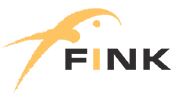How to Properly Install Your Open Source (Free) Software
When you are using open source software, you are accessing software that has source code that is not only made available to the general public, but can be changed and modified in any way by the general public, as well.
What do you mean you don’t read binary?
When the open source product is distributed, there are no exchanges of fees or royalties, so as to keep the integrity of the concept genuine and a trusted image among users.
Using Fink for Custom Installation
Installing open source projects is often done using “from scratch” applications, and also targeted towards programs that are through other sources. The Fink project is one such effort that uses a port and package to install open source Unix programs to Mac operating systems, and features a quick installation for binary distribution. This is ideal for users who prefer more flexibility and to build their own open source programs from sources using a compiler.
With Fink, packages are downloaded and built automatically. They’re installed to a tree that offers full dependency tracking, but the flexibility in choosing the installation process gives the user the control over pre-packaged binary distribution or manually installing the open source software.
Installing Open Source Software
If you prefer not to use Fink for software installation, do you know how to otherwise install your open source product? Since there are numerous open source products and even product installments, following is an overview on how you can install your open source software easily and without any additional web programming required.
You can use your computer’s operating system to install the pre-built binary package if you prefer, since this is the recommended method from many open source advisers.
If you do not choose the binary package method, you may opt for manual installation. Be sure to carefully follow installation instructions so as to avoid any likely issues. Installation can be achieved by the following short steps:
- 1. Download and uncompress the source code from the software
- 2. Move into the extracted directory that’s located in the terminal.
- 3. Next, run “./configure” to configure the software.
- 4. Run “make” to compile the software.
- 5. Run “make install” to install the software.
After these few steps, the system may inquire as to whether or not Windows is a friend of the particular open source software that’s being used. Acknowledge that as a negative and move on. The system requests this information because the software that you’re trying to install was not accompanied with a make build system, so it is harder to compile the information from the source code.
- 6. After completion, go to the project website.
- 7. You will then find a port for either Windows or your own version of it.
- 8. Now, you’re ready to download and run the installer.
You’re done, but there will likely be more shortcuts displayed, so go ahead and accept those and move on and end the installation process.
Basic installation skills are really all that you need if you do decide to download your open source software project.
Disclosure: Some of the links in this post are "affiliate links." This means if you click on the link and purchase the item, I will receive an affiliate commission

Leave a Reply